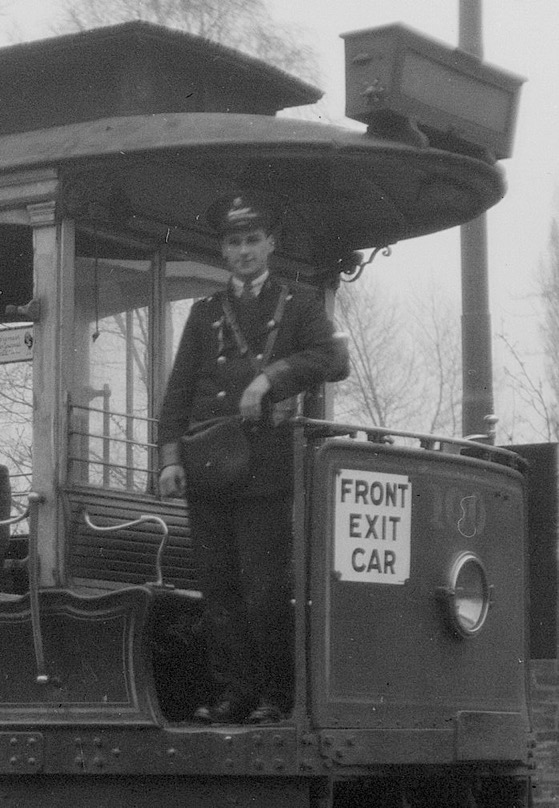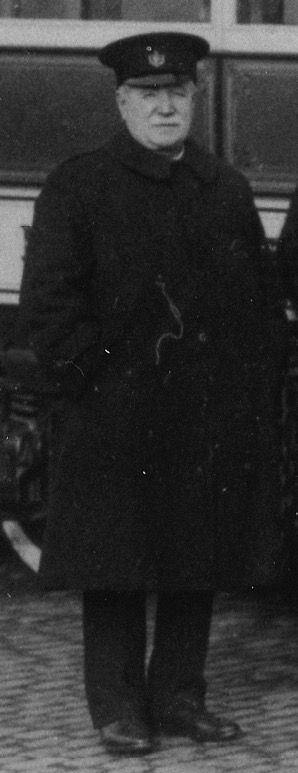Middlesbrough Corporation Tramways
History
Middlesbrough Corporation ran its own tramway services for just over 13 years following its take-over — on the 3rd April 1921 — of the lines of the Middlesbrough, Stockton and Thornaby Electric Tramways Company within the corporation boundary, as well as a share of the company's assets. The remainder of the MS&TET was purchased on the same date by Stockton-on-Tees and Thornaby-on-Tees Corporations, who operated their portion of the system (totalling 3.76 miles) via a Joint Committee.
Middlesbrough's newly acquired system amounted to 5.49 miles, comprising a main line westwards from Middlesbrough to the boundary with Thornaby, and branch lines from Middlesbrough town centre northwards (to the Middlesbrough Transporter Bridge) and southwards (to Linthorpe). Through running on the old MS&TET main line between — between North Ormesby and Norton, via Middlesbrough, Thornaby and Stockton — remained in place following the municipal take-over.
The former MS&TET system was however soon exposed to intense private bus competition, and by 1926 it was clear that Stockton and Thornaby Corporations did not see a long-term future for the tramway system. Three years later, Stockton formally announced its intention to abandon the system, which ultimately led to Thornaby, which had originally been reluctant to withdraw services, disposing of its transport interests to Stockton on the 31st July 1930; the latter continued to operate the tram services until their withdrawal six months later.
Stockton's decision to abandon the tramway left Middlesbrough with little choice but to follow suit. Despite having invested in track renewal, it agreed to withdraw services over the main line between Norton and North Ormesby, replacing these with a coordinated municipal bus service (operated by Stockton and Middlesbrough Corporations); the last tram over the main line ran on the 31st December 1931.
The remaining tramway between Linthorpe and the Transporter Bridge struggled on for another 17 months before finally succumbing, the last tramcar of all (No 103) running on the 9th June 1934.
Uniforms
Tramcar staff wore double-breasted lancer-style tunics with two rows of five buttons (narrowing from top to bottom, and probably bearing the system initials — see link) and upright collars; the latter possibly carried an employee number on the left-hand side, and system initials — M C T — on the right-hand side, probably in brass. Caps were military in style with a tensioned crown (top) and carried script-lettering grade badges — Motorman or Conductor — above which a small municipal shield badge was worn, all the insignia probably being brass.
Tramcar staff were also issued with double-breasted greatcoats with high, fold-over collars and epaulettes; photos suggest that they did not carry any badges.
Photographs depicting inspectors have survived (see below), but only show them in long, double-breasted overcoats with lapels/collars that could be worn open or buttoned up; the collars bore the grade - Inspector - on both sides in embroidered script lettering. It is unclear what jackets were worn underneath. Caps were in a military style with a tensioned crown (top) and bore a similar badge to tramcar staff, but somewhat larger and surrounded by a scroll. The shape of the badge is very similar to the 'coat of arms' badges that were used by Middlesbrough Volunteer Training Corps during the Great War, and Special Constables during the Second World War. This raises the possibility that Middlesbrough used this pattern of badge across several areas of its municipal responsibility, including for its tramway inspectors.
Further reading
For a history of Middlesbrough-area tramways, see: 'The Tramways of Teeside' by George S Hearse; The Tramway Review, Nos 22 & 23 (p141-161); Light Railway Transport League (1957).
Images
Motormen and conductors
A motorman at the controls of Tramcar No 41, still retaining the number and livery of its former owners, Middlesbrough, Stockton and Thornaby Electric Tramways. Given that this vehicle was renumbered by Middlesbrough, it seems likely that the photograph was taken shortly after the corporation takeover of 1921. The subject is wearing a standard, script-lettering Motorman cap badge, along with a small badge above, almost certainly that depicted below. Author's Collection.
Middlesbrough Corporation cap badge — brass — almost certainly of the pattern issued to tramcar staff and worn above their script-lettering grade badges. Author's Collection.
General pattern script-lettering cap badges — Motorman and Conductor — of the type used by Middlesbrough Corporation Tramways — brass.
Two corporation staff look on as the motorman of Tramcar No 120 manoeuvres his vehicle at what is possibly the terminus at North Ormesby - photo undated, but probably taken in the late 1920s or early 1930s. Author's Collection.
A blow-up of the above photo showing the motorman, who is wearing a greatcoat with high, fold-over collars and epaulettes, all devoid of insignia. His cap however carries the usual municipal shield and script-lettering grade badge.
The conductor of Tramcar No 100 poses for the Camera of Dr H Nicol on 14th November 1932. With thanks to the National Tramway Museum. 
A blow-up of the above photo showing the conductor, in 'lancer-style' tunic and with the usual badge combination on his cap. 
Middlesbrough Corporation cap badge — chrome. This almost certainly post dates the demise of the tramway, in all likelihood being issued to staff working the buses and trolleybuses. Author's Collection.
Senior staff
Civic dignitaries and a couple of inspectors pose with one of the newly delivered 132-140 series of tramcars, very probably taken in 1921.

Blow-ups of the above photograph showing the two inspectors. The distinctive shape of the cap badge is easily discerned.
Middlesbrough cap badge — bronze. This badge is frequently sold as a Middlesbrough Volunteer Training Corps badge, and the numbers in circulation would certainly support this. Given that the badge is simply based on Middlesbrough's arms, without any specific wording to indicate its purpose, there is a reasonable possibility that Middlesbrough Corporation made use of the pre-existing die (or examples in its possession) for their tramway inspectors. Author's Collection.
Middlesbrough Corporation Transport inspector's cap badge — Nickel. This badge was certainly used as an inspector's badge after the demise of the tramway, however, it may well have been used during the tramway era as well. Courtesy of the Stephen Howarth Collection.